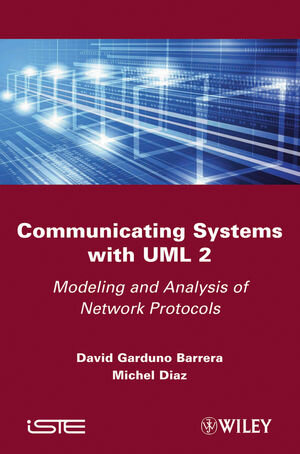
×
![Buchcover ISBN 9781118602119]()
„Students and engineers in computer science and related fields mayfind the material of interest.“ (Book News, 1 October 2011)
Communicating Systems with UML 2
Modeling and Analysis of Network Protocols
von David Garduno Barrera und Michel DiazThis book gives a practical approach to modeling and analyzingcommunication protocols using UML 2. Network protocols are alwayspresented with a point of view focusing on partial mechanisms andstarting models. This book aims at giving the basis needed foranybody to model and validate their own protocols. It follows apractical approach and gives many examples for the description andanalysis of well known basic network mechanisms forprotocols.
The book firstly shows how to describe and validate the mainprotocol issues (such as synchronization problems, client-serverinteractions, layer organization and behavior, etc.) in an easy andunderstandable way. To do so, the book considers and presents themain traditional network examples (e. g. unidirectional flows, full-duplex com-munication, error recovering, alternating bit). Finally, it presents the outputs resulting from a few simulationsof these UML models.
Other books usually only focus either on teaching UML or onanalyzing network protocols, however this book will allow readersto model network protocols using a new perspective and integratingthese two views, so facilitating their comprehension anddevelopment.
Any university student studying in the field of computing science, or those working in telecommunications, embedded systems ornetworking will find this book a very useful addition.
The book firstly shows how to describe and validate the mainprotocol issues (such as synchronization problems, client-serverinteractions, layer organization and behavior, etc.) in an easy andunderstandable way. To do so, the book considers and presents themain traditional network examples (e. g. unidirectional flows, full-duplex com-munication, error recovering, alternating bit). Finally, it presents the outputs resulting from a few simulationsof these UML models.
Other books usually only focus either on teaching UML or onanalyzing network protocols, however this book will allow readersto model network protocols using a new perspective and integratingthese two views, so facilitating their comprehension anddevelopment.
Any university student studying in the field of computing science, or those working in telecommunications, embedded systems ornetworking will find this book a very useful addition.



